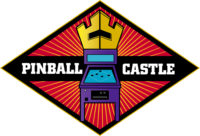Since video game consoles have been around, there has always been some form of pinball game. Atari 2600 was one of the first virtual or “visual pinball” games back in 1977 with a square ball and pixelated simulation. These virtual pinball games differ from real machines in many ways.
The 6 main differences between virtual pinball and real pinball machines are:
- Flipper lag
- The level of feel
- The sense of depth
- The price
- The games
- Practicality
These differences mean that both types of pinball game suit different people. In order to know which type of pinball machine is right for you, it’s worth going through each of these differences in more detail.
The 6 Differences Between Virtual Pinball and Real Machines
1. Flipper Lag
As you may guess, there is a big difference in terms of how the games function. Firstly, the feel of the machine is very different in both cases. Let’s start with virtual machines. Although you have buttons to control the flippers, they are not true flippers. In a lot of cases, users report a significant lag between the button and the speed of the flipper too, which takes away from the experience.
This can get very annoying, especially if you’re constantly going back and forth between a real machine and a virtual one. It will throw your game off as you will have to get used to the delay when attempting to aim your shots. While there are some people that say you can change this on the computer system, you have to be able to change aspects of the programming which can be difficult.
2. The Level Of Feel
Secondly, since virtual machines run on a computer, there’s just no real feel. With a real machine, the ball is actually moving on a frictionless surface. This allows for more natural movement in the machine, with different nudge movements affecting the ball in different ways.
Virtual pinball on the other hand has all possible movements calculated and programmed into the machine. This can make things feel a bit repetitive in terms of the movements. For example, bumpers are programmed for specific movements, so it may look like the ball is bouncing too much or too little, relative to how fast the ball was moving when it hit it.
3. The Sense Of Depth
With the playfield of virtual machines being a monitor, they lack depth. Real pinball machines have layers and ramps, but with virtual machines you miss out on the visual depth of the field. However, modern machines now come with 3D and even VR virtual pinball on offer. 4K displays also help to make things look and feel better, but nothing matches the real thing.
4. The Price
Price is a big factor when buying a pinball machine. A lot of these virtual pinball machines can run you around the same price as a new real machine. That is of course if you want to buy a new pinball machine, but virtual cabinets can range from $5,000-10,000.
Plus, you can’t forget about repairs and software upgrades, although they will usually be easier and cheaper than for a real machine. And if you want more games, they don’t come cheap either, but more on that in the next point.
However, there are smaller arcade-style pinball machines that are much cheaper, at around $2,000-$4,000. Table top machines can run you around $2,000 with no legs and a smaller body, but this sacrifices practicality and feel.
5. The Games
Most virtual pinball machines can hold hundreds or even thousands of different titles and playfields. This can have a lot of benefits, especially for a home machine. If you can buy one machine and have a whole list of different games to play, this is obviously an exciting prospect for those new to pinball or on a tighter budget.
Having one machine with multiple titles is also perfect for those with minimal space. With virtual machines, you don’t need to dedicate an entire room to 4 or 5 games, and instead can just have one machine.
Many companies sell games that you can load into your machine for instant playing. These can include new titles specialized for virtual machines, or even classic titles. Having classic titles loaded into a virtual machine might be the only way to play some of these rarer games.
Not only will you be able to access some classic titles, but you could also even make your own games for your virtual machine. If you know how to make pinball machine games on the computer, you could make your own game and load it up into your machine.
6. Practicality
Virtual pinball machines tend to be lighter and smaller than real machines. Even the full machine cabinet replicas will have a smaller body and less weight to them. Due to their simpler computer build and monitor fields, there are far fewer parts in the machine.
Some smaller table top machines are very easy to move around yourself from to room to room. Plus, one machine can hold multiple titles, so you don’t have to worry about a large space for multiple machines.
Maintenance and repairs are not as frequent with virtual machines due to the fewer parts. Plus, your cleaning job can also be cut in half, as you won’t have to wax the field, dust off all the parts in the cabinets, or replace any rubber rings or light bulbs. This is what makes these machines very home and user friendly.
Final Thoughts
Overall, it really depends on what you want from, your pinball machine. If you’re short on space or cash, a small tabletop virtual machine might suit you best, and there’s always the opportunity to play some of the rarer titles. But if you’re looking for a real pinball experience that offers hands on excitement, there’s no substitute for the real thing!
